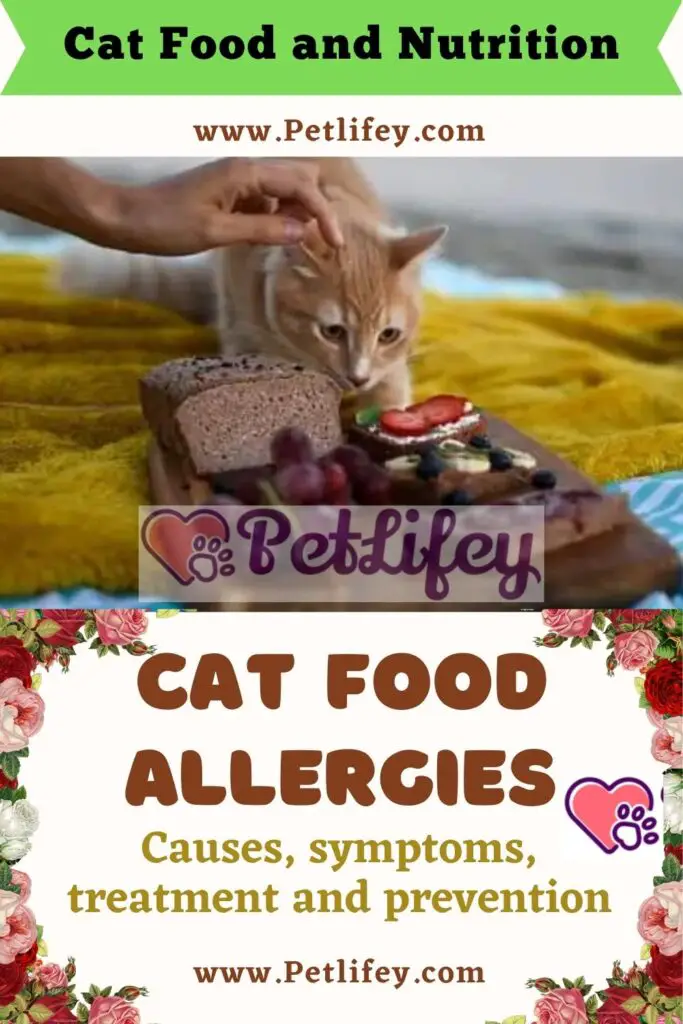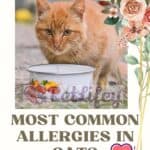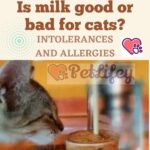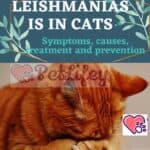
Allergic reactions affect all mammals. The cat is no exception. Cat food allergies develop with a rather complex mechanism. Let’s analyze together what the causes, symptoms and treatment of cat food allergy.
Without going into medical terminology, this pathological condition has a substance that causes an allergic response and all this is perceived by the body as something foreign, in some cases it becomes extremely dangerous and the physicist tries to destroy it with all its might.
Eliminating an external agent that causes allergy is not as easy as it may seem at first glance. The body needs a lot of effort.
Cat food allergies
We talk about food allergies when the cat is allergic to the food given to him. This food can cause an overreaction of the immune system and various symptoms such as diarrhea or allergic dermatitis in cats. These symptoms can be more or less violent, depending on the extent to which the immune system has been affected.
A cat food allergy is usually erratic, regardless of how long it has been since feeding time. Furthermore, feed allergy must be distinguished from feed intolerance, which causes similar symptoms, but not due to an overreaction of the immune system.
The causes that trigger cat food allergies
A food allergy in cats is due to an overreaction of the immune system. The main triggers of a cat food allergy are mainly proteins, more rarely thickeners or preservatives in the feed. In the overreaction, the cat produces antibodies against the actually harmless food.
As a result of the food allergy, there are a number of reactions in the cat’s body that ultimately trigger the symptoms. The causes that lead to the overreaction of the cat’s immune system are not yet sufficiently understood.
What food often causes an allergic reaction in a cat?
Cats can develop an allergy to any food, but in general they are allergic to some proteins found in beef or lamb, soy and wheat gluten. Most cats do not tolerate plant foods because they are not part of their natural diet. Furthermore, they also have lactose intolerance too and it would seem strange but there is a wide debate about cats that do not digest cow’s milk.
Symptoms
Food allergy symptoms for cats can vary, the most common being gastrointestinal distress and skin reactions.
The phenomena that manifest the disease are as diverse and varied as the foods to which cats can be allergic. Here is a list of the most common symptoms:
- skin conditions
- diarrhea
- vomiting of the cat
However, the manifestation of any of these symptoms is not synonymous with an allergic reaction. In fact, they also occur frequently in many other health problems and still remain alarm bells and a great reason to consult your vet.
Allergic skin reactions
Cat skin conditions are a common symptom of an allergic reaction. They cause itching so badly that they sometimes scratch with blood. These wounds are easy entry routes for bacteria to enter the blood vessels of cats. Therefore, never underestimate your partner’s itch and act directly.
In the case of an allergic reaction, you will often notice the presence of scales and from time to time even red spots. Skin disease always starts in one spot and then spreads to the rest of your cat’s body from there:
- head
- ears
- armpits
- stomach
- groins
- skin folds
It also happens that allergic reactions cause dermatitis.
The treatment
All the allergy tests that we usually do on people, unfortunately we do not perform them on animals, obviously in part they are done but there are only some allergens, objectively the number is very limited. Often the vet who suspects food allergies and will give the cat a special diet.
The duration of the specific diet can be up to three months. The composition of such diets includes products that were not previously used in food for our cat.
First, it is necessary to exclude the product from the diet that provokes the development of an allergic reaction. If the clinical symptoms are already pronounced, it is necessary to resort to antihistamines. Certainly not on our initiative but only and exclusively they can be prescribed by a veterinarian.
Without proper nutrition, however, no therapeutic effect can be achieved. You have to try to do the right diet. The task is not easy, but quite doable.
When feeding, use hypoallergenic foods. There is no absolute guarantee, but you can try it and it is always better if a specialist is involved in choosing our cat’s diet.
Prevention

The best way to take care of our furry friend is always and only prevention. It is very important to give absolute priority to the preparation of the pet’s nutrition. In the diet it is necessary to use only high-quality food.
Proceed with regular and regular checks to check for ticks and fleas in the cat’s hair and ears.
In conclusion, cat food allergy is a serious enough condition that is not as easy to manage as we would like it to be. Since we are talking about an animal, you should not treat it yourself but take the cat to visit the vet. Only a qualified specialist can prescribe the right treatment.






